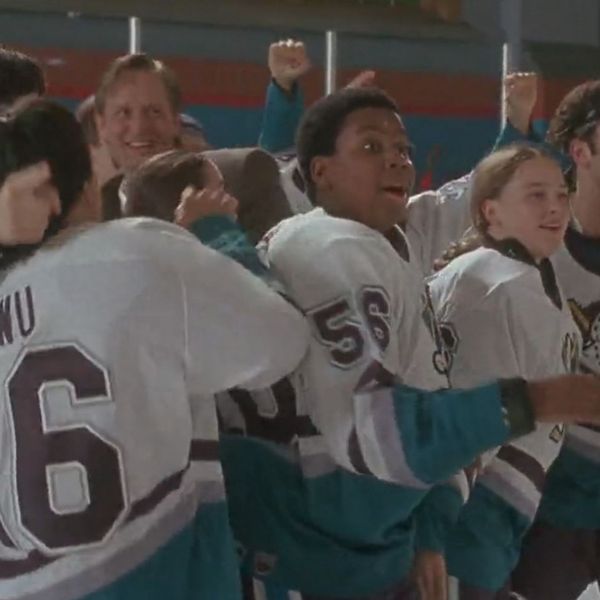March, 2003, LOS ANGELES - Those who know me know that I am an inconvertible Anglophile - or more broadly, a Britanophile, which includes my affection for Scotland and Wales as well. I love things British. My car is British. My wardrobe, to a good extent, is British. I even love the food in London - I think British food has shaken its prevailing perception as indigestible and become quite wonderful. I try to get to Britain for holidays as often as I can. I love things British.
Only a month since I was last there on holiday, I was back in England again in February. This quick return was prompted by a most welcome invitation by convention organizer Anne Lindup to attend the Starfleet Ball in Bournemouth on the south coast of England. What a happy combination this was - a Star Trek convention in England! And what a symbolically appropriate place Bournemouth was, because it could be said that it was in this English seaside town, that our high tech world got its start. The very first wireless exchange took place from Bournemouth between the inventor, Guglielmo Marconi talking to physicist Lord Kelvin on the Isle of Wight in 1898. A bit more than a century later, Star Trek fans, armed with their 21st century wireless communication device -- the cell phone -- gathered in Bournemouth for a weekend of celebration, talks and fantasizing about the science wonders yet to come. The only damper to a super weekend was that I had caught an awful cold with a nagging cough that just wouldn't quit. I felt miserable.
It was my luck that Marina Sirtis was also a guest at the convention. She is an uncanny healer. She told me at the hotel of her secret curative - what she called "Dr. Footlights." "Get in front of the warm light of the footlights," she said, "and that miserable feeling will disappear. You'll be cured." She was so right. The minute I stepped before those bright lights to be embraced by the thunderous welcome of the fans, that wretched feeling miraculously faded. I was functional again. It was great to be with long-time fans that had now become friends. I enjoyed the talks and especially - the highlight of the convention - the Starfleet Ball itself. Everyone was dressed to celebrate. There were people clad as Starfleet officers, alien ambassadors, and other imaginative beings. The men in drag looked "divine" but rather conventionally 20th century. Only my rude coughing interrupted occasionally to remind me that I was sick. But the combination of the Starfleet Ball and "Dr. Footlights" made for a potent curative tonic.
 After the convention, I went on into London for a week of theater. It was like reliving history to see the D'Oyly Carte Opera Company's production of Gilbert and Sullivan's "H.M.S. Pinafore" at the Savoy Theater. This theater and Gilbert and Sullivan are inextricably linked in theater history. Richard D'Oyly Carte, presenter of Gilbert and Sullivan's works, built the Savoy Theater in 1881 to present his productions of their operettas. I myself also have a personal history with "H.M.S. Pinafore." I had played the Captain of the Pinafore in college, a fact known by some. Thus, I was sternly cautioned to restrain myself from singing along with the performers. I did as ordered - but I manage to sing along mentally. It was a nostalgic evening of familiar tunes performed sparklingly - both on stage as well as in my mind.
After the convention, I went on into London for a week of theater. It was like reliving history to see the D'Oyly Carte Opera Company's production of Gilbert and Sullivan's "H.M.S. Pinafore" at the Savoy Theater. This theater and Gilbert and Sullivan are inextricably linked in theater history. Richard D'Oyly Carte, presenter of Gilbert and Sullivan's works, built the Savoy Theater in 1881 to present his productions of their operettas. I myself also have a personal history with "H.M.S. Pinafore." I had played the Captain of the Pinafore in college, a fact known by some. Thus, I was sternly cautioned to restrain myself from singing along with the performers. I did as ordered - but I manage to sing along mentally. It was a nostalgic evening of familiar tunes performed sparklingly - both on stage as well as in my mind.
It was a week of eclectic theater going that ranged from classic American comedy, "Arsenic and Old Lace," starring Michael Richards from the TV series, "Seinfeld," to an autobiographical musical by Boy George titled, "Taboo," to Shakespeare's "Tempest" with a towering performance by Derek Jacobi as Prospero. I even included an evening at the Royal Opera House in Covent Garden with Verdi's "Falstaff." A very special evening was a hilarious American comedy, "Triple Espresso," produced by my friend Dennis Babcock. He had designated one night "George Takei Night at Triple Espresso" and all my friends were admitted at half price. It was wonderful to share an evening of theater together with long-time friends as well as new fans. Freda and Colin Boydell, dedicated editors of my fan club newsletter, who live down in Cornwall at the very southwestern tip of England, astounded me with their fantastic support. They took a bus all the way into London just to see the show with us and then went back right after a post theater drink in the theater bar with us to make that same long journey back to Cornwall through the night. They had made a similar trip all the way up to Edinburgh, Scotland, when I was performing there in a play titled "Undertow." They are wonderful, devoted friends and I very much appreciate their support.
The week was capped by the opportunity to attend the Olivier Awards Show at the Lyceum Theater. This is the award show named for the great actor Sir Laurence Olivier to recognize outstanding achievements in British theater. One of the many presenters was the royalty of theater herself, Dame Judi Dench. In her inimitable way, she was, at once, elegant and natural. After the show, we visited the nearby St. Paul's Church in Covent Garden, traditionally known as the "actors' church." That reputation was certainly proved true when we spotted Judi Dench come in alone and quietly slip into a pew. She prayed calmly and undisturbed. We left silently. It was a rare and touching moment.
As much as I am an Anglophile, I am an even prouder Californian and more specifically, an Angeleno. I am a native of Los Angeles and I love my hometown. I love its dynamism, its diversity, and our incomparable climate. My English cold quickly disappeared once I got home. The welcoming sunshine was glorious. But, therein lies our drawback as well. Los Angeles is built on land that is a semi-arid desert. The one essential that makes the existence of this great metropolis, the second city of America, possible is water brought in from afar. On the last weekend of the month, I went on a journey that gave me a deeper appreciation for what we take for granted - a glass of water.
 A colleague on a board on which I sit, Phil Pace, is the chairman of the Metropolitan Water District of Southern California, which provides the water for our sun parched metropolitan area. Phil invited me, together with a busload of dignitaries, on a weekend tour of the Colorado River Aqueduct system, which supplies a large portion of the water for southern California. It was an awe-inspiring experience.
A colleague on a board on which I sit, Phil Pace, is the chairman of the Metropolitan Water District of Southern California, which provides the water for our sun parched metropolitan area. Phil invited me, together with a busload of dignitaries, on a weekend tour of the Colorado River Aqueduct system, which supplies a large portion of the water for southern California. It was an awe-inspiring experience.
 We traveled all day across the southern California desert to Lake Havasu straddling the California-Arizona border. Created by Parker Dam on the Colorado River, the lake was pristine and turquoise blue. The calm water lake had transformed the red, mud-roiled water of the Colorado River. Indeed, the name of the lake, Havasu, is the Navaho Indian word for "blue water." This vast body of water is one of three sources of life for southern Californians. That night, we stayed at the lodge in a small nearby camp for the maintenance workers.
We traveled all day across the southern California desert to Lake Havasu straddling the California-Arizona border. Created by Parker Dam on the Colorado River, the lake was pristine and turquoise blue. The calm water lake had transformed the red, mud-roiled water of the Colorado River. Indeed, the name of the lake, Havasu, is the Navaho Indian word for "blue water." This vast body of water is one of three sources of life for southern Californians. That night, we stayed at the lodge in a small nearby camp for the maintenance workers.
 The next morning, we were taken to a great concrete building by the dam that housed the pump station. We had explained to us that the water of the lake was pumped up by the sheer might of the centrifugal force created by the row of giant impellers before us. The water was pushed up the rugged mountainside through massive pipes to a high altitude reservoir at Copper Basin. We were then driven up a winding mountain road to that facility. The reservoir was a vast basin but the water level was at about half capacity. We were visiting the aqueduct system at an historic moment. A massive inspection and repair work on the aqueduct - something that had not been done in five decades - was taking place at a cost of $8.2 million. The aqueduct and the reservoir system had been shut down and drained. Yet, the people served by the system were oblivious of this program because a new reserve reservoir, Diamond Valley Lake, was being tapped to supplement the system. It was from this high mountain reservoir at Copper Basin that the water flowed down by gravity through the aqueduct system to make its two hundred and forty-two-mile journey across desert and through mountain tunnels to serve eighteen million people from Ventura to San Diego in southern California. Our bus followed the concrete aqueduct all day across the desert. A monumental engineering achievement along the water's trek is the thirteen-mile long tunnel blasted through the San Jacinto Mountain Range, the third tallest mountain in the state, to maintain the water's flow. Our bus skirted that daunting climb up the San Jacinto range. We arrived back in Los Angeles tired but profoundly appreciative of the colossal human effort and ingenuity that make possible the shower we all looked forward to as well as the drink of ice-cold water that we so took for granted. I am today, both a proud and deeply grateful Angeleno.
The next morning, we were taken to a great concrete building by the dam that housed the pump station. We had explained to us that the water of the lake was pumped up by the sheer might of the centrifugal force created by the row of giant impellers before us. The water was pushed up the rugged mountainside through massive pipes to a high altitude reservoir at Copper Basin. We were then driven up a winding mountain road to that facility. The reservoir was a vast basin but the water level was at about half capacity. We were visiting the aqueduct system at an historic moment. A massive inspection and repair work on the aqueduct - something that had not been done in five decades - was taking place at a cost of $8.2 million. The aqueduct and the reservoir system had been shut down and drained. Yet, the people served by the system were oblivious of this program because a new reserve reservoir, Diamond Valley Lake, was being tapped to supplement the system. It was from this high mountain reservoir at Copper Basin that the water flowed down by gravity through the aqueduct system to make its two hundred and forty-two-mile journey across desert and through mountain tunnels to serve eighteen million people from Ventura to San Diego in southern California. Our bus followed the concrete aqueduct all day across the desert. A monumental engineering achievement along the water's trek is the thirteen-mile long tunnel blasted through the San Jacinto Mountain Range, the third tallest mountain in the state, to maintain the water's flow. Our bus skirted that daunting climb up the San Jacinto range. We arrived back in Los Angeles tired but profoundly appreciative of the colossal human effort and ingenuity that make possible the shower we all looked forward to as well as the drink of ice-cold water that we so took for granted. I am today, both a proud and deeply grateful Angeleno.
Woman Was Fired For Refusing To Wear A Bra At Work—And Now She's Suing
Christina Schell, from Alberta, Canada, stopped wearing bras three years ago citing health reasons.
While Schell did not specify the health reasons, she did state she finds them to be "horrible."
But after her refusal to sign or adhere to a new enforced dress code policy to wear a bra or tank top under her work shirt at a golf course grill where she worked, Schell was promptly fired.
Now, the 25-year-old has filed a human rights violation against the Osoyoos Golf Club, Osoyoos, in British Columbia, Canada.
Schell said:
"I don't think any other human being should be able to dictate another person's undergarments."
When she asked the general manager, Doug Robb, why she had to comply, the manager told her the mandate was for her protection.
Robb allegedly said:
"I know what happens in golf clubs when alcohol's involved."
After losing her job, she brought the case to the British Columbia Human Rights Tribunal and told them the club's dress code was discriminatory because the rule didn't apply towards male employees.
Schell told CBC:
"It's gender-based and that's why it's a human rights issue. I have nipples and so do the men."
David Brown, an employment lawyer in Kelowna, BC, said gender-specific dress codes could be viewed as discriminatory under the BC Human Rights Code.
He stated:
"It's an interesting question as to whether or not an employer can dictate the underwear that women can wear, but they don't say anything about the underwear that men can wear, and does that create an adverse impact on the individual?"
Brown added:
"If this policy is found to be discrimination, the next question is does the employer have a bonafide occupational requirement to essentially impose this on the individual?"
"I'm kind of scratching my head as to what that occupational requirement would be."
@GlobalBC The policy is sexist the peopl supporting it are sexist. Hope she wins her complaint— Lori bell (@Lori bell) 1529692660.0
@Shelby_Thom @WoodfordCHNL @GlobalOkanagan @GlobalBC Then men should have to wear either a tank top or undershirt— caffene fiend (@caffene fiend) 1529624161.0
@SoldByBrock @Shelby_Thom @GlobalOkanagan @GlobalBC What does common courtesy have to do with wearing a bra? Breast… https://t.co/ZVI2xDdpgf— M Shumway (@M Shumway) 1529843759.0
As for the tank top option, due to working under oftentimes extreme heat serving tables outsides, Schell did not want to wear another layer of clothes just because of her gender.
Schell said:
"It was absurd. Why do you get to dictate what's underneath my clothes?"
Employment lawyer Nadia Zaman told CBC that the club can enforce a gender-specific policy as they deem necessary as long as the establishment can prove it is for the occupational safety of its workers.
But the attorney questioned if forcing female employees to wear a bra was applicable in this case.
Zaman stated:
"If they simply require that female employees wear a bra but then they don't have a similar requirement for males, and they can't really justify that … then there is a risk that their policy's going to be deemed to be discriminatory."
Under British Columbia's discrimination law, it is illegal for employers:
'to discriminate against any individual because of his race, color, religion, sex, or national origin'.
@GlobalBC @globalnews Logistically bras or the absence of does not impact health or work performance. That is my v… https://t.co/65cLHBMowf— Louisette Lanteigne (@Louisette Lanteigne) 1529769211.0
McDonald's employee Kate Gosek, 19, agrees with Schell in that the dress code is "unnecessary." She too was harassed by her employers at a McDonald's in Selkirk, Manitoba, over refusing to wear a bra.
"She just told me that I should put on a bra because, McDonald's—we are a polite restaurant and no one needs to see that."
Schell's case sparked plenty of debates on Twitter.
@DunnMan77 @GlobalBC It's just discriminatory, woman shouldn't have to wear bras if they don't want to. As well as… https://t.co/RXhRVWUuNy— Mary Johnson (@Mary Johnson) 1529685276.0
@DunnMan77 @GlobalBC Men do not have to wear underpants if they don't want to. As of right now there are no laws to… https://t.co/l8FuPVybWo— Mary Johnson (@Mary Johnson) 1529686418.0
@GlobalBC Women have the right not to be forced to wear a bra Shaving & makeup also is a choice. If you want to do… https://t.co/Ybkj6PLDnD— Lozan (@Lozan) 1529686156.0
@Lozan72 @GlobalBC I would completely understand her and your argument if we were talking about a potential law to… https://t.co/trRyNAubn4— Chris George (@Chris George) 1529690293.0
@GlobalBC This story frustrates me. There's no dress code equivalent for men? Well if I saw the outline of a male s… https://t.co/5YbAvXKRcO— Molly Max (@Molly Max) 1529705327.0
Schell is not alone in her disdain for bras.
@GlobalBC I personally HATE wearing a #bra absolutely hate it with passion and unashamed to admit it. I HATE BEING… https://t.co/GEi3LtxIDa— Lozan (@Lozan) 1529686305.0
Schell is still waiting to hear from the Human Rights Commission about her claim.
H/T - GettyImages, Twitter, Indy100, CBC











